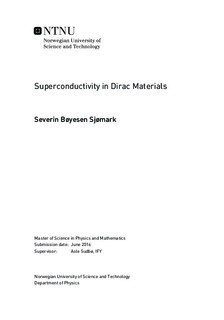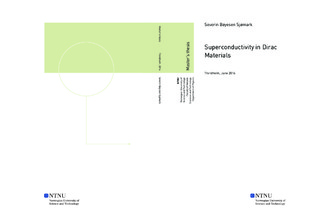| dc.description.abstract | In this Master s thesis we consider superconductivity in Bravais and bipartite lattice fermion models with nearest neighbour hopping and Rashba-type spin-orbit coupling. The superconductivity is modelled from a negative-U Hubbard model, leading to a general interaction Hamiltonian we simplify by mean field theory. We investigate inter- and intraband superconducting pairing mechanisms with no momentum-transfer in the helicity band basis, and the consequent structure in the spin basis. The goal of this thesis is to find some general requirements on the pairing mechanisms in order to achieve Majorana edge states. We do this by considering the symmetry properties of our systems, and look at the requirements on the superconducting pairing to achieve non-trivial topological phases. Particular focus is put on the proposed venue of chiral p-wave pairing, well known to lead to a relativistic energy dispersion, and Majorana fermions. Because of spin-momentum locking as a result of spin-orbit coupling, a chiral p-wave pairing in the diagonalized band basis is required for a relativistic dispersion. By transforming the chiral p-wave superconducting terms back to the spin basis, it is observed that the form of the superconducting gap functions in this basis need not be chiral. This is a consequence of the momentum-dependent transformation between the band and spin basis. | |

